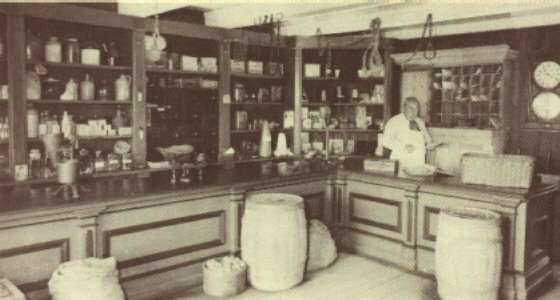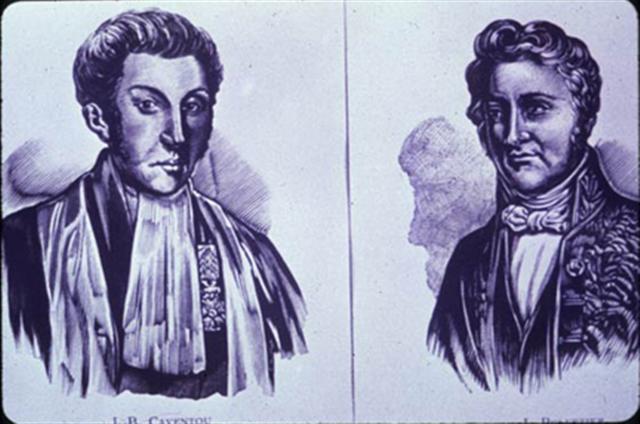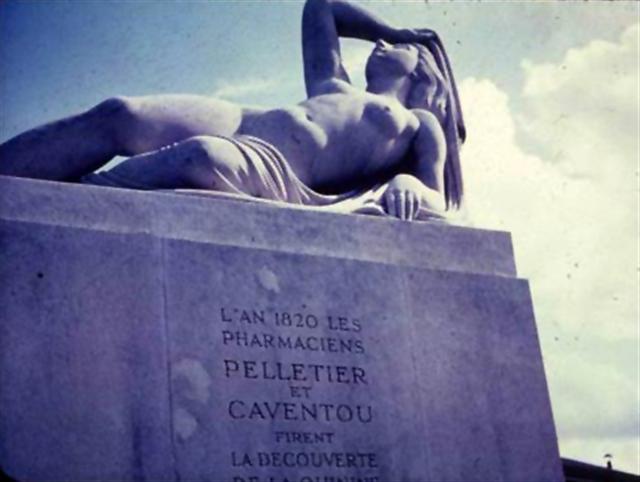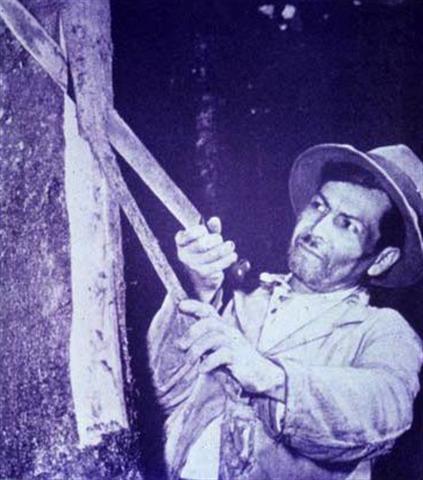
|
|
The Starkwather Years
 
Pharmacy and Health Care
 | During Starkwather’s time and that of the other pharmacist owners in the early 19th century, before shipments of needed pharmaceutical and other necessary supplies could be readily made from the Atlantic seaboard or upper great lake cities like Chicago, supplies had to come from Britain or other European sources by ship. |
Given the length of time for, and the uncertainties of Atlantic crossings, pharmacists had to buy large quantities of needed supplies well in advance, but also under terms that included payment in advance! Furthermore, adulterated or substandard drugs and chemicals were frequently dumped in North America by European suppliers before adequate controls or means of detection existed in the New World.
The arrival time of transatlantic ships in the early 1800’s was almost always uncertain, especially during certain seasons. This made the purchase of large quantities advisable.
Pharmacopoeias
“Pharmacopoeias” are official standards for drugs, unusually issued under the authority of national governments, but prepared by professional bodies of physicians and pharmacists, and made compulsory by national legislation to represent accepted levels of professional practice.
In Canada, that sometimes meant recognizing pharmacopoeias or “formularies” (those drugs still in use but no longer in contemporary pharmacopoeias) of British, French, and American origin. The first British Pharmacopoeia appeared only in 1864 (although the London Pharmacopoeia began publishing in 1618). The French Codex was published in 1818 and the first U.S. Pharmacopoeia in 1820.
Canadian law also accepted the pharmacy-produced Canadian Formulary, first published in 1905, by what is now the Ontario College of Pharmacists (OCP), with its last edition in 1949 (but official until 1993).
Pharmacists practising in Niagara during this period may have relied on any or all of these publications (with the exception of the Codex.)
The Language of Prescriptions
Latin, written or abbreviated, was a means of international communication between health professionals until well after World War II. Consequently, Latin appeared in full or abbreviation, in prescriptions for drug names and instructions, on labels of stock bottles or jars, as well as in pharmacopoeias, formularies, and reference books.
Today, Latin survives mainly in abbreviated form in the directions of prescriptions or as part of botanical terms. Until relatively recently in Canada, and during the later period of the active Niagara Apothecary, patients were not usually told specifically what medications they were receiving – except perhaps by the physician – nor did drug names appear on the labels of dispensed prescriptions.
Consequently, much of the whole process of prescribing by physicians and dispensing by pharmacists retained an element of mystery for the patient. The patient dutifully carried a piece of paper he couldn’t read or understand from the physician to the pharmacist, who disappeared behind a counter or into a back room, adding a further aura to the whole procedure, and eventually emerged with a container labeled with English instructions. Thus “t. i. d. p. c. et h.s.” became “three times a day after meals and at bedtime;” “Tr. Zingiber., tincture of ginger;” and “Paregoric,” “camphorated tincture of opium.” And, considering the size of the town, the physician may also have stopped at the Apothecary to write some of his prescriptions there.
Professional Training and Drug Control
Drug control laws were generally non-existent or largely unenforced in early 19th-century Anglo-American countries. The pharmacist was expected to use professional judgment to the extent he could, depending on his level of education or training, with Europeans usually being more advanced than Anglo Americans. North American pharmacists and physicians usually learned by apprenticing with experienced practitioners or sometimes by using relevant existing books. Prior to the 1880’s in Ontario there was no formal school of pharmacy and periods of apprenticeship of up to four years in length remained as a prerequisite for admission even then and well into the 20th century.
Pharmaceutical and Medical Events
The first pharmacy organization, school, and professional pharmacy journal in the principal Anglo-American countries (Britain, Canada, and the USA) emerged in the United States starting in 1820 as the Philadelphia College of Pharmacy and subsequently under its umbrella. (The term “college” was long--and sometimes still may be--used to describe a professional body or organization, as well as a teaching facility.)
Quinine was first isolated in 1820 as the active constituent in Cinchona bark by the French pharmacists Pelletier and Caventou. (Below, see period etchings of Pelletier and Caventou, as well as a monument in their honour.)
 
This meant a major advance in treating malaria, long a scourge in Europe and North America plagued by swampy areas. Previously, the bark itself (also known as Peruvian or fever bark) from South America (shown below, being stripped from a tree) had been used with sometimes uncertain results. This decade also saw the first isolation of caffeine and the proven benefits of iodine to treat goiter.

Once active constituents could be isolated from crude drugs, it was only a matter of time, as science and technology advanced, until those same active constituents could be synthesized to produce relatively specific and pure medications with predictable therapeutic activities.
 
|
|
 |


